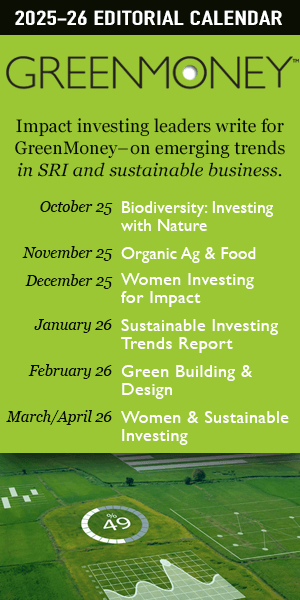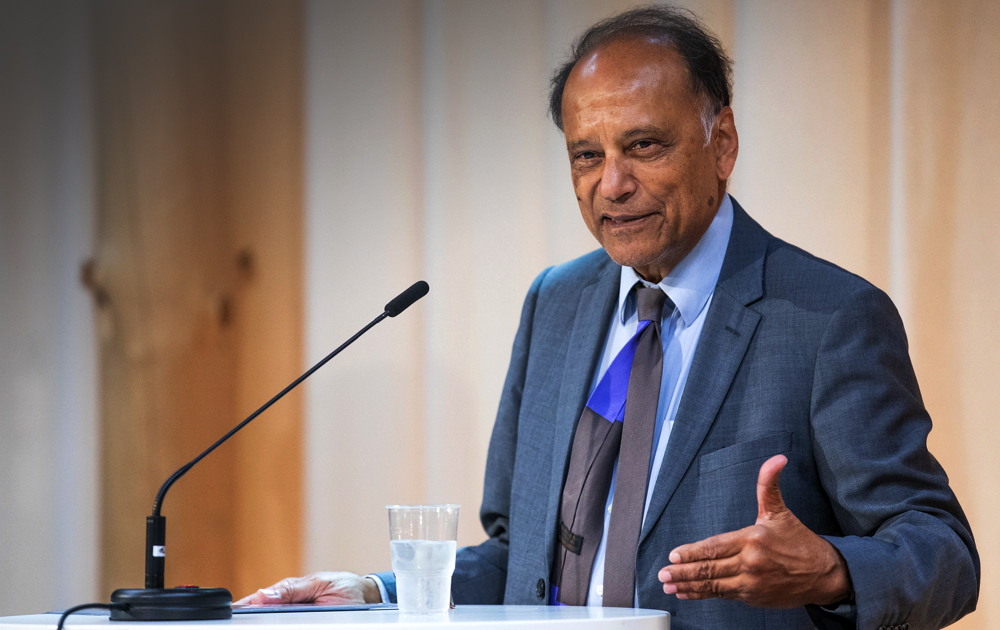Above: Scotts River Headwaters, Siskiyou County, CA. Photo courtesy of EFM
 EFM, the forestland investment company I co-founded, is celebrating its 20-year anniversary next year. And yet, the premise upon which we started EFM – that commercial forests could and should be valued and managed for the full range of goods and services they produce – timber, carbon, biodiversity, water provision, recreation, scenic values, tribal and indigenous values and rural livelihoods – is as enduring and critical today as it was twenty years ago. In many ways, it is more so, because the world has caught up with the critical truth that healthy, intact and functioning ecosystems – particularly forests – are fundamental to the earth’s life support system at the very moment that these ecosystems are unraveling due to climate change and human pressure.
EFM, the forestland investment company I co-founded, is celebrating its 20-year anniversary next year. And yet, the premise upon which we started EFM – that commercial forests could and should be valued and managed for the full range of goods and services they produce – timber, carbon, biodiversity, water provision, recreation, scenic values, tribal and indigenous values and rural livelihoods – is as enduring and critical today as it was twenty years ago. In many ways, it is more so, because the world has caught up with the critical truth that healthy, intact and functioning ecosystems – particularly forests – are fundamental to the earth’s life support system at the very moment that these ecosystems are unraveling due to climate change and human pressure.
Moreover, there is broad recognition that any hope we have on limiting global temperature rise to 2 degrees celsius is predicated on protecting and expanding the capacity of forests (and other natural systems) to store carbon and enhance resilience in the face of climatic change, such as increased fire incidence. As the world decarbonizes, expanding the capacity of forests, grasslands and oceans to sequester and store carbon is estimated to provide 37% of needed emission reductions in the next decade (Griscom et al 2017).
Today EFM has over $250M of assets and 150,000 acres of forestland under management and advises clients globally on investments in natural climate solutions. We have established three co-mingled forest investment funds and are launching our fourth fund, along with expanding our advisory work on natural climate solutions. Our approach is to purchase forests in ecologically significant landscapes, restore them to greater productivity and health, and lock in the improvements through conservation easements, carbon contracts, habitat banks, and selective sales to tribal and community entities. These strategies provide cash flow while the forest continues to grow. As timber inventory builds, the forest can resume producing timber without significantly compromising biodiversity, water quality, and habitat by using harvesting techniques like thinning and variable retention harvests that retain large trees in the landscape and improve species diversity and structural complexity. Meanwhile, financial returns are diversified and strengthened by monetizing not just timber but emerging ecosystem service markets.

I came to my lifelong fascination with the natural world on a visit to the Galapagos when I was 14. In this iconic place of adaptation and speciation, which inspired Darwin and countless others, the world, and the forces that drive it, began to make sense to me as well. I went on to study Biology and then earned an MBA at the University of Chicago. While the latter taught me the language of finance, I have never seen anything in the business world that competes with the magnificence and sophistication of the survival, collaboration, and competitive strategies exhibited by natural systems on display in that first visit to the Galapagos. All that to say the obvious: that Nature, having tested strategies over millennia, is our best teacher on what works best in an ecosystem, and we ignore her lessons at our peril. EFM’s approach is rooted in understanding those natural forces and working with them to manage forests and other ecosystems for resilience and enduring economic and social value.
Following my MBA, I tried my hand at commercial banking but hungered for applying my energy and skills to things that mattered. Having grown up nourished by my mother’s textile design business in Peru and witnessing the chilling effect of a Marxist regime, I deeply valued private enterprise. I also appreciated the general theory of the invisible hand of the market and the drive to market efficiency, forces that also shape the natural world. However, it became evident that the invisible hand of the market fails to create social benefit in the face of pervasive negative externalities. The primary forests in the Pacific Northwest, where I was living in the early 90s, were being logged at an alarming rate. Natural capital, built over millennia, was crumbling, with a false conviction that logging “decadent” old-growth forests was good economics. It was instead a classic market failure, rife with imperfect information and negative externalities, with presumed “profits” driven by liquidating natural capital that had taken millennia to build. Following this conversion of primary to simplified forests, the wetter forests near the coast have continued to produce timber, albeit at a reduced rate, while the less productive forests in the interior have been left damaged, unproductive, and fire prone, with hundreds of sawmills permanently shuttered and a sharp decline in economic opportunity in rural communities.

Initially under the auspices of non-profit Ecotrust, I launched EFM with co-founder Spencer Beebe in 2005 to demonstrate a new approach to buying and managing forests that would create enduring value and provide investors with both a competitive return and the knowledge that their investment was rebuilding the health and vitality of forests at a landscape scale. Managing forests for carbon is particularly well-suited to the forests of the western U.S., where native species – Douglas-fir, hemlock, spruce, Ponderosa pine, and others – routinely grow to 200-300 years old. Transitioning forests from the industrial standard of clearcut harvest at 35-40 years to longer rotations with significant permanent retention of large trees can double the carbon stored in the forest.

At the same time, these older, more complex forests are excellent for biodiversity, from spotted owls to marbled murrelets, from elk to bear, from lichen to fungi. Further, EFM concentrates large trees in riparian areas and actively restores rivers, improving habitat for iconic Pacific salmon, that move between ocean and mountain streams in their life cycle. These restoration strategies enhance the value of conservation easements, which pay landowners to maintain and restore forests, as well as the provision of cold, clean water and the recreational and scenic value of forests.
Finance tends to be a male-oriented profession, and forestry even more so. We have been outsiders from the start, not just as a woman-owned and woman-led forest investment management company, but also because of our departure from the conventional strategy of maximizing timber returns to instead consider the whole forest, focus on long-term value rather than short-term profits, and embed conservation and community at our core. EFM has taken full advantage of our outsider status: the ability to move easily among many communities – from impact investing to landscape scale restoration to carbon finance to tribal land repatriation – which has opened doors not available to entities focused on a timber-only strategy.
And now the edges that we occupy are slowly becoming the norm, as institutional investors are increasingly demanding investment strategies that generate positive impacts, and EFM’s strategy is becoming mainstream. With growing demand for well-managed forests, EFM has set a course to significantly increase its assets under management, with a strong pipeline of projects that deliver significant impact and the desired financial target. With this momentum, we feel more optimistic than ever that forests and other natural systems can finally get their due: to provide us – all of Earth’s residents – with the goods and services we need – timber, water, food, habitat, carbon storage, climate regulation, recreation – while continuing to build natural capital for generations to come.
Article by Bettina von Hagen, CEO & Board Chair of EFM. Bettina helped launch EFM and joined the company as CEO in 2008. Bettina has spent the past 30 years working to promote economic viability, social equity, and environmental health in the Pacific Northwest with a particular focus on forestry. A former vice president of Ecotrust’s Natural Capital Fund and commercial banker, Bettina has over 30 years of experience in banking, impact investing, and fund management. She also has significant expertise in ecosystem service markets, particularly the forest carbon market, where she is involved in developing protocols for forest carbon projects at the state and federal levels. Previously, Bettina was Vice President at Ecotrust for forestry programs and for the Natural Capital Fund, a fund which invests in key businesses and initiatives in the conservation economy. Prior to joining Ecotrust in 1993, she was a vice president and commercial lender at First Interstate Bank of Oregon. Bettina has an MBA from the University of Chicago.

















